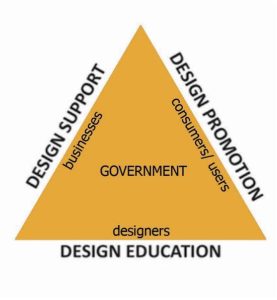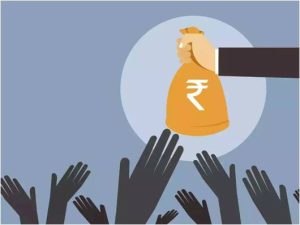Design policy
Design policy is an instrument or a set of guidelines by which the Government determine and enact rules, activities, and other processes necessary to support design at large.
Design policies build design capabilities, aimed directly
- at capacity building through development of organizational or individual design capabilities
- Support research, especially directed at improving the quality and applicability of design research and suggest measures that enhance the demand of design-related services.
- support technical development by directly addressing technological issues and build networking and collaboration to improve design performance.
What is a Design Policy
Design Policy is a broad cooperative project between the government, the business community, and the design community.
- It is incredibly important as a guide to how the government views its interaction with the design community.
- Design Policy is also an important part of a continuing effort for supporting a growing design community and recognizing its value to society both culturally and economically.
- Design Policy involves strategies to promote innovations and competitiveness. It guides through a design integrated ecosystem and results in domestic and global market capitalization.
Why do we need a Design Policy
- Market capacity building and capitalization framework.
- Functional effectiveness and to enable clarity of purpose for any interventions into the system
- Mass consumption and mass production in a democratic society
- To communicate with a wider audience effectively and decisively
- To fight obsolescence and to make public sector more efficient.
- Education and knowledge, with special emphasis on increasing availability of design related studies on primary and secondary levels, as well as strengthening studies related to research in the design field in upper educational levels.
- Working environments and support networks of designers, with the aim of strengthening collaboration, increasing efficiency, simplifying processes, and improving regulation.
- Awareness raising, increasing the understanding of the importance and value of good design and architecture, in addition to promoting presentations and exhibitions.
Creation of a Design Policy ecosystem
The Design Policy Ecosystem guides the recognition of different organizations and institutions that provide design support in a country or region, divided in the five main roles of the design policy cycle
- funders
- policymakers
- intermediary
- beneficiary
- evaluator
and linked to five main types of organizations (government and governance, advocates, consultancy and professional sector, research and education, demand).
The Policy seeks to involve design in the planning and preparation of development proposals.
This will have a larger impact in urbanscapes, ruralscapes, infrastructure, economy and efficiency – eg. Tourism
A policy tool is needed to meet the nation’s political needs – achieving vision
Role of Design Policy
The role of design policy is to create a guidance framework which helps the architects, planners, creative professionals, stakeholders and decision makers to critically deliver the services.
Aim of the workshop
To generate a discussion amongst all the stake holders in design domain that includes
- design professionals
- architects
- urban designers
- landscape designers
- heritage experts
- people from creative industry
- product designers
- industrial designers
- interiors designers
- artists
People in the implementation side that includes
- Government officials
- ( Bureaucrats & Technocrats)
- Department of Tourism,
- LSGD
- PWD
- Town planning department
The needs and thoughts of all involved in the design domain is to be heard and will be given a chance to present their ideas and suggestions.
A platform to bring together all these various viewpoints to one place and to discuss it and consolidate
Objectives of the Workshop
- To formulate and implement a design policy and practice, unique to Kerala with the vision ‘KERALA – THE GLOBAL DESIGN HUB’.
- To develop a design-based economy which would bring more employment opportunities and opens up more arenas for the youth in the state
- To develop a design vocabulary in lines with sustainability, resilience, climate crisis and disaster management
- To create a regulatory framework that delivers critical aspects of livability and equity
- To create sub frameworks for best practices by bringing together learnings from global strategies and help government invest in Good Design

